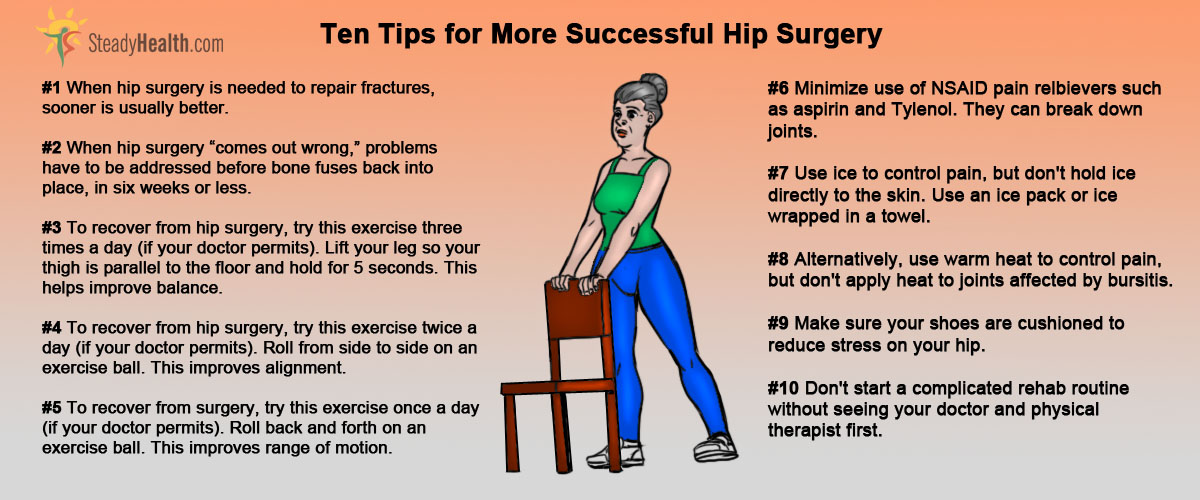Table of Contents
One of the most common questions in the Steady Health forums is how to manage pain after hip replacement surgery:
- What is causing severe leg pain after my friend's hip replacement surgery?
- Is it normal for one leg to be longer than another after hip replacement surgery?
- What causes pain in the groin after hip replacement surgery?
- I had hip replacement surgery because I was in pain all the time, why won't the pain go away now?
And fortunately thousands of members help each other find answers. Today, however, we would like to address the things that can be done before hip replacement surgery to make the operation go more smoothly. Most of these suggestions are matters hip replacement recipients will have to discuss with their doctors, but all of them can make a real difference in the outcome of the procedure.
The sooner the surgery for hip fractures, the better the outcome
Broken hips need to be repaired right away. Canadian surgeons studied post-surgical records of hip fracture patients who were fast-tracked for surgery, receiving surgery on average just 6 hours after being brought to the hospital, and patients who had to wait 24 hours or more for fracture repair. Both groups had complications, but only 30% of fast-tracked patients had complications compared to 47% of patients who had to wait.
Hip replacement surgery often results in uneven leg length. When this happens, it needs to be addressed quickly
About 1/3 of all hip replacement operations result in pressure on the femur that causes on leg to become longer than the other. Typically the different in leg lengths after the surgery is 1-2 inches (25 to 50 mm). If the problem is not addressed in the first few weeks after surgery, it can become permanent, resulting in permanent hip and back pain. If surgery is impossible, sometimes it is possible to wear an "elevator shoe" on foot, but usually the surgeon will operate on the heel to correct the length of the leg.
Revision surgery on the hip itself must be performed in the first six weeks, before the bone has had a chance to fuse.
See Also: A New Way To Get A New Hip
If you don't have hip problems yet - and don't try this if you do - practice BAM-321 to prevent future hip issues.
Poor posture places stress on joints all over the body, especially on the spine and hip. Dr. Steven Weiniger, a posture expert at BodyZone, LLC, recommend a daily exercise routine he calls BAM-321 (balance three times a day, alignment two times a day, and motion once a day) to keep the muscles surrounding the hip joint strong.
- Three times a day, lift your thigh so it is parallel to the ground or floor, while holding to a wall for support. Maintain this position to a count of five. This exercise improve balance.
- Two times a day, move side to side while sitting on a balance ball. This improves alignment.
- Once a day, move back and forth while sitting on the balance ball. This helps maintain mobility and range of motion.
- Hip Fracture Accelerated Surgical Treatment and Care Track (HIP ATTACK) Investigators. Accelerated care versus standard care among patients with hip fracture: the HIP ATTACK pilot trial. CMAJ. 2014 Jan 7, 186(1):E52-60. doi: 10.1503/cmaj.130901. Epub 2013 Nov 18.
- Mindmap by steadyhealth.com
- Photo courtesy of Quinn Dombrowski by Flickr : www.flickr.com/photos/quinnanya/3515344309



Your thoughts on this